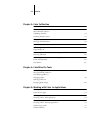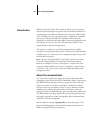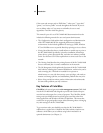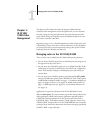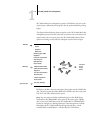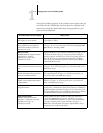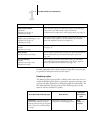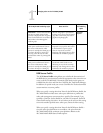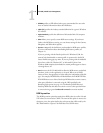
xv Key features of ColorWise
There are a number of features that can be used to modify printing results.
Depending on your particular needs, you can:
• Set the behavior of CMYK printing to emulate DIC, Euroscale, and
SWOP offset press standards
• Match PANTONE colors for the best match when printed using four-
color press conditions or when printed using presses with extra, custom
plates
• Select a
color rendering dictionary
(CRD), also called a rendering style,
for RGB printing. CRDs allow for rich, saturated printing of presentation
graphics; smooth, accurate printing of photographs; and relative or
absolute colorimetric rendering for specialized needs
• Define the source of incoming RGB color data for better screen matching,
and you can provide for better color conversion of RGB data with no
source information
• Define whether RGB data is converted into the full gamut of the copier/
printer or whether it is first converted into the gamut of another device,
such as a press standard. This feature is very helpful for making one device
behave like another. It is also useful for evaluating the appearance of the
RGB file under different printing conditions without having to reprocess
the RGB data each time
ColorWise offers an open color architecture, letting users customize the
iR C2100/2100S to meet new printing needs as they arise. ColorWise
supports ICC profiles, which are industry standard color profiles that define
the color behavior of a device. By downloading ICC profiles to the
iR C2100/2100S, it can simulate a custom press (or another copier/printer)
as well as accurately print colors from a particular monitor or a particular
scanner. In addition, you can create customized ICC profiles for the copier/
printer.
ColorWise also lets you use any Status T densitometer by importing data in a
standard file format (see Appendix C). In this case, it is important to note
that the quality of the instrument used will determine the quality of the
calibration.




